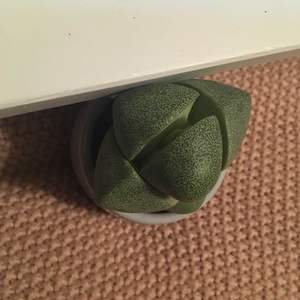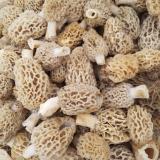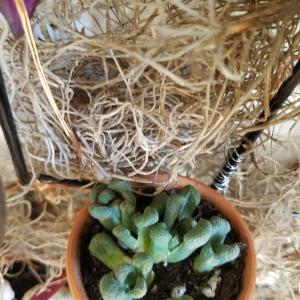成长记
kensong
2018年09月22日

I now added "Lithops Pseudotruncatella (Truncate Living Stone)" in my "garden"
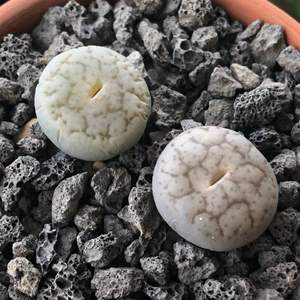

0
0
Finncarter
2018年05月13日

Lithops Olivecea, know as the living stone has annual (white daisy) likd flowers - for up to 3 weeks. These slow growing succulents produce lovley patterns on the top. they need to be watered every 4-6 weeks. @GFinger #Lithops ##Pattern ##Livingstones #Daisy
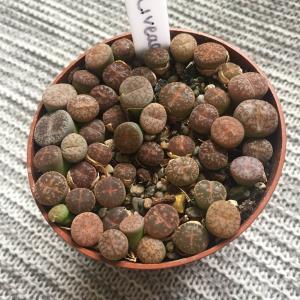

1
0
文章
stone
2016年12月28日
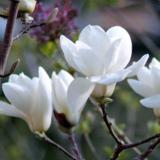
#lithops #living-stone #succulent Living Stones (Lithops) are unusual succulents that have evolved to resemble the pebbles and rocks that litter their native habitats through southern Africa. These very small plants hug the ground and grow extremely slowly. It can take years for a plant to eventually fill its pots with new leaves. Structurally, Lithops are comprised of two fused leaves above ground that connect to an underground stem with a long root.
The leaves are extremely thick and the degree of fusion depends on the species. Some species appear to be a single leaf, with hardly any evidence of the leaf fusion, while others are deeply lobed to the level of the soil. These plants are great collectibles, but require a careful hand with the water. Too much water and the leaves will burst or the plant will die from beneath. If you provide them with good conditions, they will flower in mid-to late summer with white and yellow daisy-like flowers that emerge from between the leaves.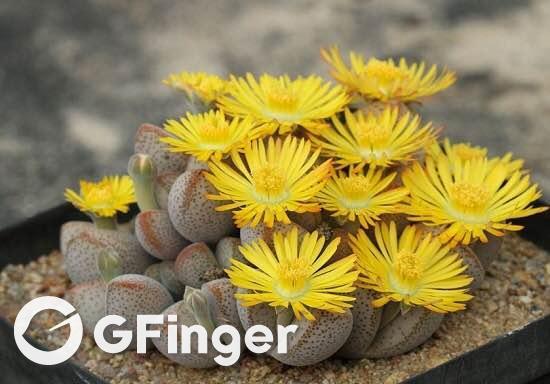
Growing Conditions
Light: Lithops thrive in full sunlight, so provide as much light as possible. Weak light will cause elongated leaves and washed out patterns on the leaves.
Water: Lithops have a definite annual cycle that should be carefully followed. In the summer, as the plants are dormant, it is okay to lightly water them if the leaves shrivel. In general, plants should not be watered during their summer dormancy or during the winter.
Temperature: Warm in summer (household temperatures are fine) and colder in winter months (down to 55˚F/13˚C at night).
Soil: Use a cactus mix or very fast-draining potting soil mixed with sand.
Fertilizer: Fertilizer is not necessary.
Propagation
Most Lithops species can be propagated from seeds. Seedlings typically take two to three years to reach maturity and begin flowering.
Repotting
Lithops are very slow growing, small plants, which makes them ideal as houseplants (once you get the hang of their watering schedule). Older plants form attractive clumps of “pebbles” in their pots, which are highly prized. In general, plants should only be repotted if there are cultural problems (soggy soil) or the plant has outgrown its dish container, which will only happen every several years。
Grower’s Tips
Lithops develop a new set of leaves every year, with new leaves emerging in the fall and growing through the winter and into the summer. In late summer, the plant will go dormant and water should be severely restricted to prevent bursting leaves. The flowers appear near the end of summer or fall, first showing up as a small bud forcing its way between the leaves and growth will begin again. It’s safe to water during this period. Heading into the winter, the leaves will still be growing, but you should stop watering, even as the older leaves shrivel up and encase the new growth. In the spring, it’s safe to begin lightly watering again as the plant begins to grow again, heading toward their summer dormancy period and the emergence of new leaves in the fall.

The leaves are extremely thick and the degree of fusion depends on the species. Some species appear to be a single leaf, with hardly any evidence of the leaf fusion, while others are deeply lobed to the level of the soil. These plants are great collectibles, but require a careful hand with the water. Too much water and the leaves will burst or the plant will die from beneath. If you provide them with good conditions, they will flower in mid-to late summer with white and yellow daisy-like flowers that emerge from between the leaves.

Growing Conditions
Light: Lithops thrive in full sunlight, so provide as much light as possible. Weak light will cause elongated leaves and washed out patterns on the leaves.
Water: Lithops have a definite annual cycle that should be carefully followed. In the summer, as the plants are dormant, it is okay to lightly water them if the leaves shrivel. In general, plants should not be watered during their summer dormancy or during the winter.
Temperature: Warm in summer (household temperatures are fine) and colder in winter months (down to 55˚F/13˚C at night).
Soil: Use a cactus mix or very fast-draining potting soil mixed with sand.
Fertilizer: Fertilizer is not necessary.

Propagation
Most Lithops species can be propagated from seeds. Seedlings typically take two to three years to reach maturity and begin flowering.
Repotting
Lithops are very slow growing, small plants, which makes them ideal as houseplants (once you get the hang of their watering schedule). Older plants form attractive clumps of “pebbles” in their pots, which are highly prized. In general, plants should only be repotted if there are cultural problems (soggy soil) or the plant has outgrown its dish container, which will only happen every several years。

Grower’s Tips
Lithops develop a new set of leaves every year, with new leaves emerging in the fall and growing through the winter and into the summer. In late summer, the plant will go dormant and water should be severely restricted to prevent bursting leaves. The flowers appear near the end of summer or fall, first showing up as a small bud forcing its way between the leaves and growth will begin again. It’s safe to water during this period. Heading into the winter, the leaves will still be growing, but you should stop watering, even as the older leaves shrivel up and encase the new growth. In the spring, it’s safe to begin lightly watering again as the plant begins to grow again, heading toward their summer dormancy period and the emergence of new leaves in the fall.
4
3
rebeccamee:Not so familiar with this plant but they look cute, will give it a thought to grow them if I have more room to keep all my succulents



